Document Author
Year Published
- 2015 (11) Apply 2015 filter
- 2013 (8) Apply 2013 filter
- 2016 (8) Apply 2016 filter
- 2018 (5) Apply 2018 filter
- 2014 (4) Apply 2014 filter
- 2017 (4) Apply 2017 filter
- 2021 (3) Apply 2021 filter
- 2000 (2) Apply 2000 filter
- 2008 (2) Apply 2008 filter
- 2010 (2) Apply 2010 filter
- 2020 (2) Apply 2020 filter
- 1988 (1) Apply 1988 filter
- 1995 (1) Apply 1995 filter
- 1999 (1) Apply 1999 filter
- 2003 (1) Apply 2003 filter
- 2005 (1) Apply 2005 filter
- 2007 (1) Apply 2007 filter
- 2011 (1) Apply 2011 filter
- 2014; 2017 (1) Apply 2014; 2017 filter
- 2019 (1) Apply 2019 filter
- SRLN (1) Apply SRLN filter
Topic
- (-) Remove Courts filter Courts
- 100% Access to Justice (59) Apply 100% Access to Justice filter
- Reports, Evaluations, Best Practices, Surveys (29) Apply Reports, Evaluations, Best Practices, Surveys filter
- Research (29) Apply Research filter
- Self-Help Centers (27) Apply Self-Help Centers filter
- Trial Court Self-Help (25) Apply Trial Court Self-Help filter
- Reports (23) Apply Reports filter
- Strategic Planning (18) Apply Strategic Planning filter
- Linking a Self-Help Center to Other Services (13) Apply Linking a Self-Help Center to Other Services filter
- Legal Aid (12) Apply Legal Aid filter
- Allied Professionals (9) Apply Allied Professionals filter
- Best Practices for Self-Help Centers (9) Apply Best Practices for Self-Help Centers filter
- Evaluation (8) Apply Evaluation filter
- Simplification (8) Apply Simplification filter
- Technology (8) Apply Technology filter
- Articles & SRLN Briefs (5) Apply Articles & SRLN Briefs filter
- Ethics Education (5) Apply Ethics Education filter
- Judges (5) Apply Judges filter
- Justice Tech Entrepreneurs (5) Apply Justice Tech Entrepreneurs filter
- Private Bar (5) Apply Private Bar filter
- ATJ Commissions (4) Apply ATJ Commissions filter
- Impact of Self-Represented Litigant Innovations on Cost and Efficiency (4) Apply Impact of Self-Represented Litigant Innovations on Cost and Efficiency filter
- Presentations (4) Apply Presentations filter
- Triage (4) Apply Triage filter
- Unbundling (4) Apply Unbundling filter
- Working Groups (4) Apply Working Groups filter
- Administrative Agencies (3) Apply Administrative Agencies filter
- Best Practices (3) Apply Best Practices filter
- Clerk, Self-Help Center Staff, and Librarian Ethics (3) Apply Clerk, Self-Help Center Staff, and Librarian Ethics filter
- Funding (3) Apply Funding filter
- Managing a Self-Help Center (3) Apply Managing a Self-Help Center filter
- Plain Language (3) Apply Plain Language filter
- Plain Language & LEP (3) Apply Plain Language & LEP filter
- Scaling in Court Systems (3) Apply Scaling in Court Systems filter
- Starting a Self-Help Center (3) Apply Starting a Self-Help Center filter
- Attorney Ethics (2) Apply Attorney Ethics filter
- Conferences & Summits (2) Apply Conferences & Summits filter
- Constitutional Issues (2) Apply Constitutional Issues filter
- Evaluating a Self-Help Center (2) Apply Evaluating a Self-Help Center filter
- Forms (2) Apply Forms filter
- Judicial Ethics (2) Apply Judicial Ethics filter
- Libraries (2) Apply Libraries filter
- Regulatory Concerns (2) Apply Regulatory Concerns filter
- Remote (2) Apply Remote filter
- State-by-State (2) Apply State-by-State filter
- Surveys (2) Apply Surveys filter
- Triage & Service Portal (2) Apply Triage & Service Portal filter
- Webinars (2) Apply Webinars filter
- Forms (1) Apply Forms filter
- State Language Access Plans (1) Apply State Language Access Plans filter
State
- California (8) Apply California filter
- Alaska (6) Apply Alaska filter
- Maryland (5) Apply Maryland filter
- Florida (2) Apply Florida filter
- New York (2) Apply New York filter
- Utah (2) Apply Utah filter
- Washington (2) Apply Washington filter
- Georgia (1) Apply Georgia filter
- Idaho (1) Apply Idaho filter
- Illinois (1) Apply Illinois filter
- Massachusetts (1) Apply Massachusetts filter
- Michigan (1) Apply Michigan filter
- Minnesota (1) Apply Minnesota filter
- Montana (1) Apply Montana filter
- New Mexico (1) Apply New Mexico filter
- North Dakota (1) Apply North Dakota filter
- Texas (1) Apply Texas filter
- Virginia (1) Apply Virginia filter
Region
Tags
Post date
Search results
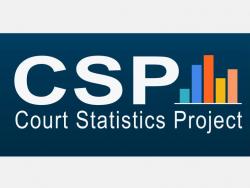
Weblinks: The Court Statistics Project (NCSC 2015)
The Court Statistics Project (courtstatistics.org) (CSP) — a joint project of the National Center for State Courts (NCSC) and the Conference of State Court Administrators (COSCA) — publishes caseload data from the courts of the fifty states, the District ...
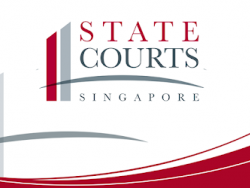
Weblinks: Simplification in Singapore (State Court of Singapore 2015)
Transparent information that seeks user feedback from the State Courts of Singapore about what a simplified court process means for SRLs in criminal, SRLs in civil, lawyers and others that can be found on the Singapore State Court's Key Features of t ...
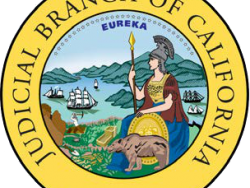
Weblinks: Elkins Family Law Task Force & Implementation Task Force (Judicial Branch of California 2010, 2013)
In Elkins v. Superior Court (2007) 41 Cal.4th 1337, the California court recommended that the Judicial Council of California establish a task force to “study and propose measures to assist trial courts in achieving efficiency and fairness in marital d ...
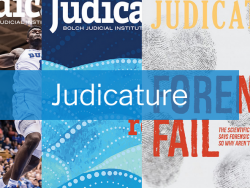
Article: A Handbook For Courts (Barnes and Greacen 2000)
A review of Caseflow Management, The Heart of Court Management in the New Millennium, a book the authors note, "should rest on the shelves of every court administrator and chief judge." In the book Tom Henderson of the National Center for State ...

Article: Unified Family Courts: Recent Developments in Twelve States (Greacen 2003)
A look at how courts in twelve states were enhancing access to justice for families in response to a 2002 white paper from the Conference of State Court Administrators on improving family courts. The white paper recognized the national interest in improvi ...
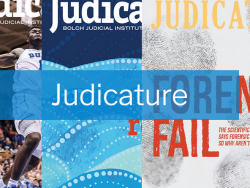
Article: What Standards Should We Use To Judge Our Courts? (Greacen 1988)
Two themes run through this article-the search for standards by which to measure the performance of courts and the search for ways to improve the courts' public image. Grecean notes that although definitive standards for judging courts did not exist ...
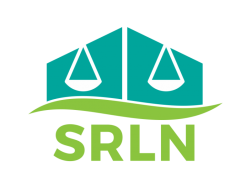
Resource: Title IV-D Funding Resource Guide (SRLN 2014, revised 2017)
Many state court systems and individual courts take advantage of federal funding under Title IV-D of the Social Security Act to obtain reimbursement for the costs of adjudicating child support and paternity matters when hearings are handled by persons oth ...

Website: California Court-Legal Aid Partnership Grants (Legal Services Trust Fund Commission 2015)
Each year ten percent of the California's Equal Access Funds allocation is distributed by the Legal Services Trust Fund Commission as Partnership Grants. This funding is available for joint projects of courts and legal services programs to make legal ...
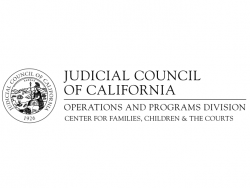
Report: California Courts Self-Help Centers: Report to the Legislature (California 2007)
This is a report, found at http://www.courts.ca.gov/documents/rpt_leg_self_help.pdf, on the implementation of California's Statewide Action Plan for Self-Represented Litigants. It includes detailed financial and collaboration information in response ...
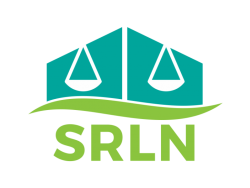
Survey: SRLN Tiers of Service Survey Tool (SRLN 2015)
The SRLN Tiers Survey was developed for states to conduct a quick tiered inventory of their court based self-help services. Tier 1 services are asynchronous (one-way), Tier 2 services are synchronous (two-way), and Tier 3 services integrate multiple provi ...